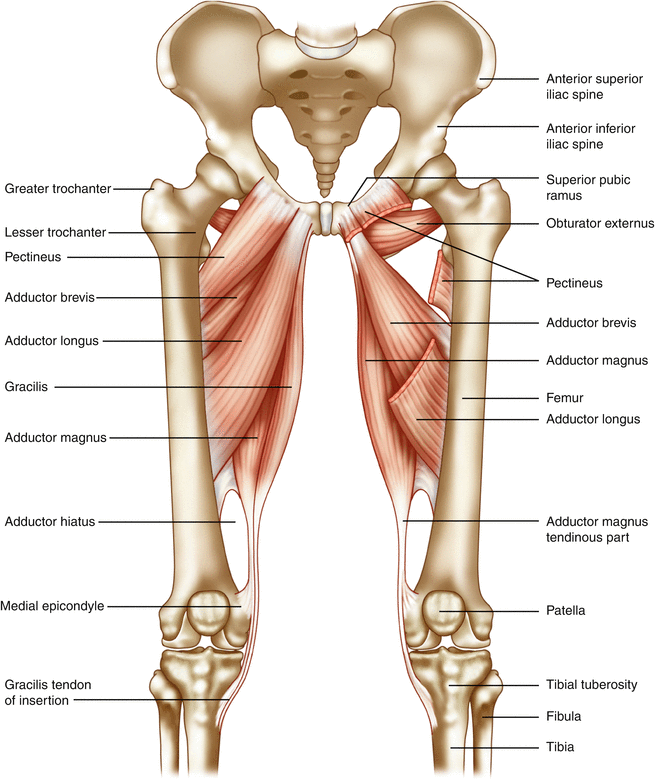Adductor Brevis Muscle/Adductor Brevis is a muscle in the thigh situated immediately deep to the pectineus and adductor longus. It belongs to the adductor muscle group. The main function of the adductor brevis is to pull the thigh medially. The adductor brevis and the rest of the adductor muscle group are also used to stabilize left to right movements of the trunk, when standing on both feet, or to balance when standing on a moving surface. The adductor muscle group is used pressing the thighs together to ride a horse and kicking with the inside of the foot in soccer or swimming. Last, they contribute to flexion of the thigh when running or against resistance (squats, jumping, etc.).[rx]
Adductor Brevis aids in the adduction of the thigh and to a smaller extent flexion. The adductor brevis is the smallest of the group, lying just deep to pectineus and adductor longus. It originates from the body and inferior ramus of the pubis and inserts on the proximal portion of the linea aspera. This muscle divides the obturator nerve into an anterior and posterior division.

Origin and Insertion
- Adductor Brevis muscle has a relatively narrow origin located on the anterior surface of the body of the pubis, while some fibers also arise from the lateral surface of the inferior pubic ramus. From there, the muscle widens into a triangular shape as it runs inferolateral towards its insertion on the femur.
- The muscle inserts via an aponeurosis on the superior half of the medial lip of linea aspera. From there the insertion continues halfway down an imaginary line between the lesser trochanter and linea aspera. This wide insertion is located on the upper third of the femur, medial to the insertion of adductor Magnus, and lateral to the insertion of the pectineus muscle.
Nerve Supply
- Like the majority of the thigh adductors, adductor brevis is innervated by the obturator nerve. Obturator nerve is derived from the lumbar plexus (anterior branches of spinal nerves L2-L4).
Blood Supply
- The blood supply for the adductor brevis muscle typically comes from the deep femoral artery (profundal femoris) and from its branch called the artery for the adductors. It can also be supplied partially from the medial circumflex femoral and obturator artery.
- Venous blood from this region is drained by the deep femoral vein, whose path follows that of its artery before emptying into the femoral vein.
Function
- The muscle is primarily known as a hip adductor. It also functions as a hip flexor. Whether it acts to rotate the femur laterally or medially is dependent on position.
- As its name suggests, the main function of the adductor brevis muscle is the adduction of the thigh. This action is particularly active when the thigh is in a flexed position and during the gait cycle. Adductor Brevis also has a role in external rotation and flexion of the hip.
- All adductors of the thigh pull the leg medially when walking. This way, they help to maintain balance and shift the center of gravity onto the supporting foot, while standing and walking. This same group of muscles is also used when crossing our legs.

